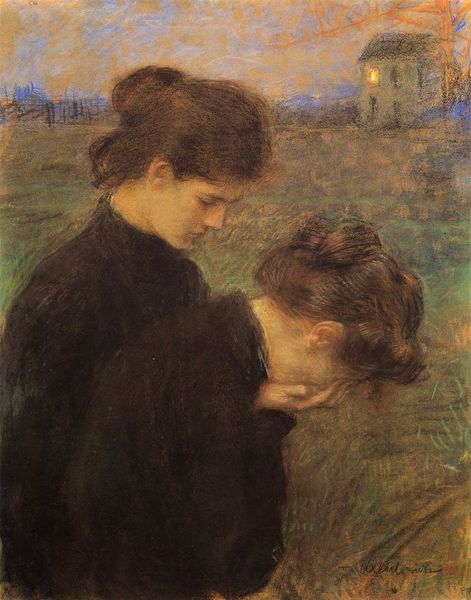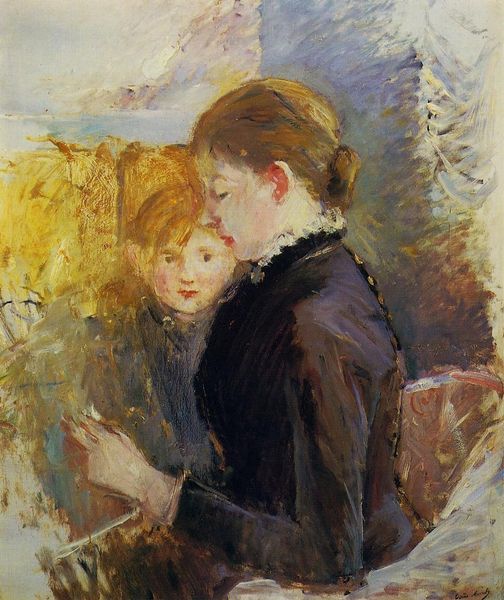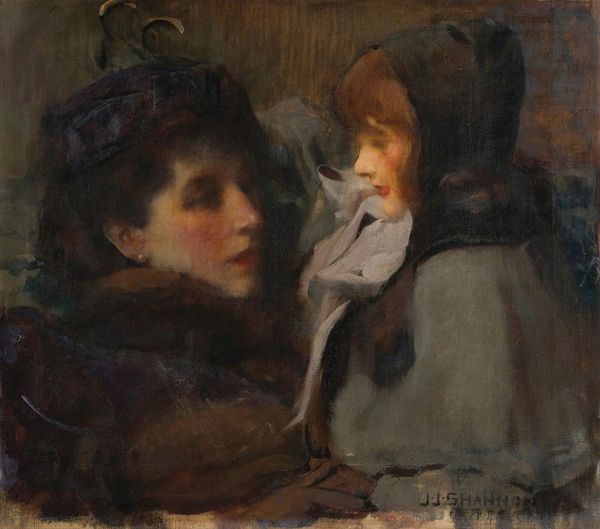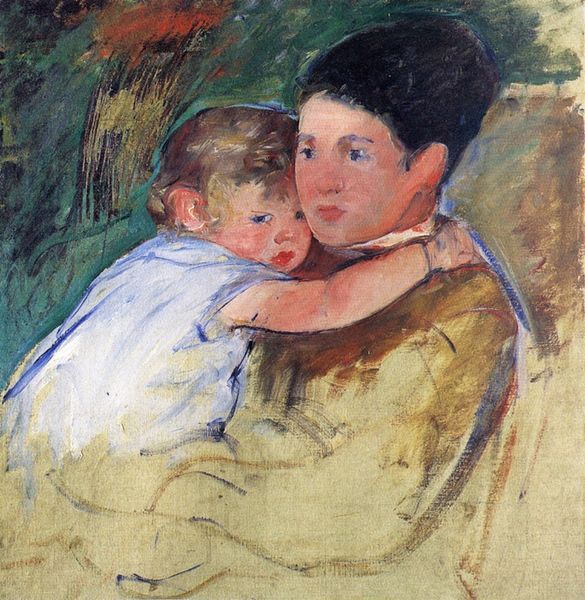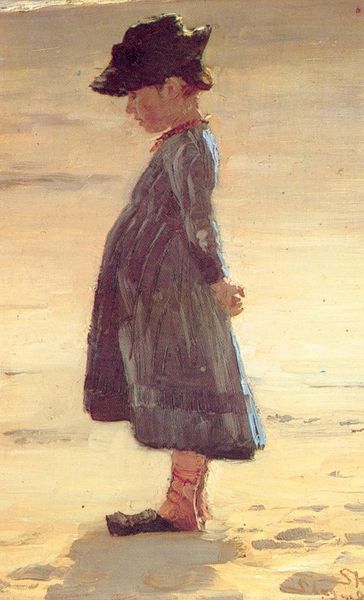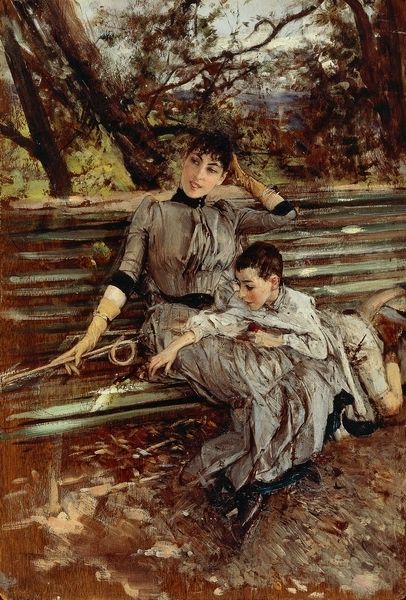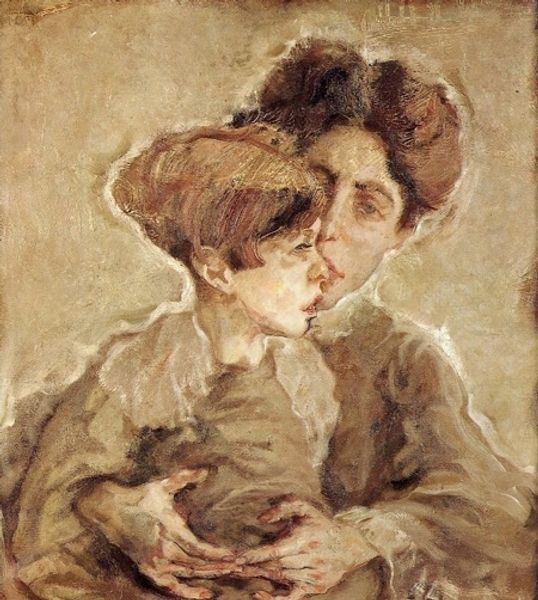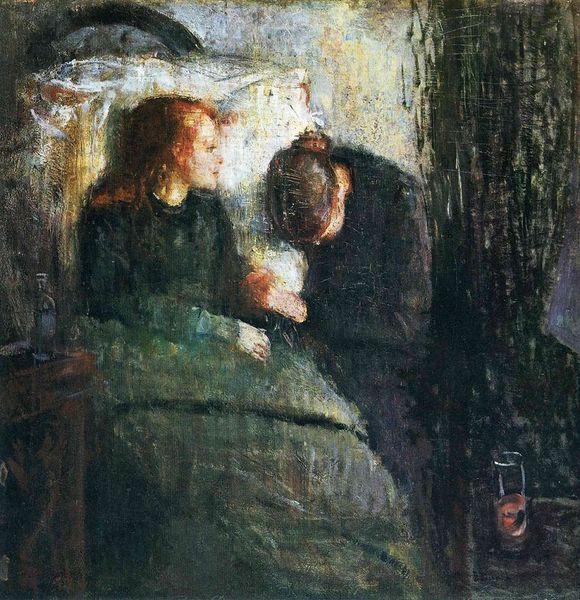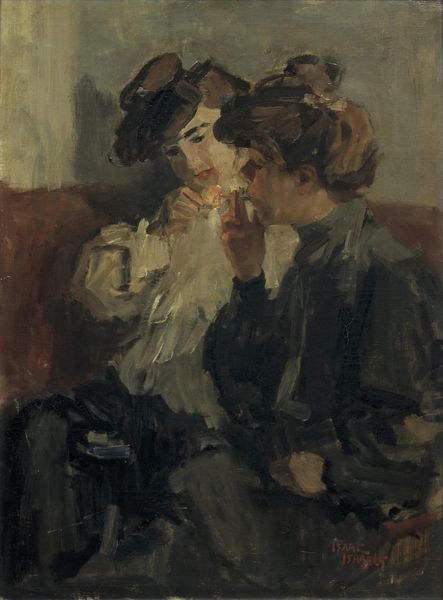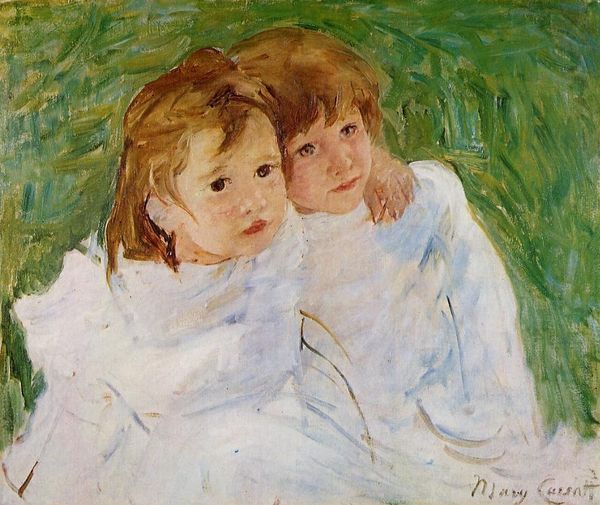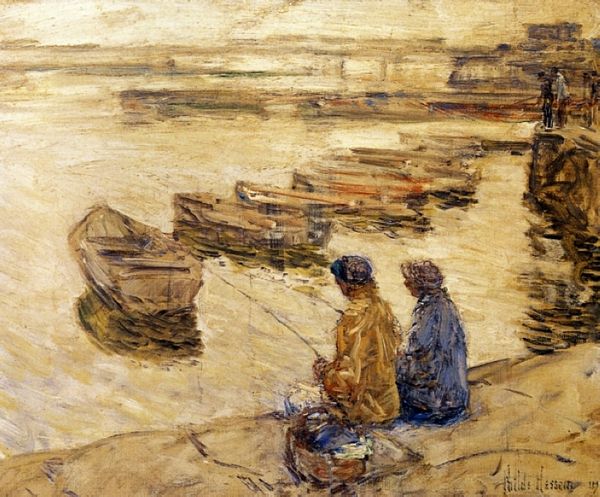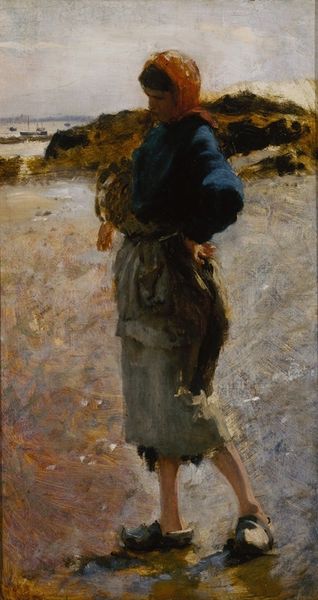
drawing, pastel
#
portrait
#
drawing
#
charcoal drawing
#
figuration
#
romanticism
#
genre-painting
#
pastel
#
watercolor
Copyright: Public domain
Curator: Here we have Teodor Axentowicz's work titled "Pod Brzemieniem Nieszczęścia." The medium appears to be pastel and perhaps charcoal on paper. Editor: A wave of sorrow just washed over me. The color palette is so subdued, mirroring the overwhelming despair etched into the figures. What do you see when you examine it closely? Curator: First, the formal arrangement strikes me. See how Axentowicz has arranged the two figures? One stands stoically, a vertical anchor almost, while the other figure is collapsed in a diagonal, a posture of grief and vulnerability. This compositional contrast directs our reading of their relationship. Editor: Absolutely. And the repetition of bowed heads directs us. The downward gaze is such a universal symbol for shame, grief, submission, even piety. Here, it's amplified by the context. It’s not simply sadness; it is "nieszczęścia"—a profound misfortune, almost a destiny of suffering. Are there deeper visual cues beyond these body gestures and composition? Curator: The atmospheric perspective is also key here. The blurry rendering of the background elements suggests a world mirroring their inner turmoil. There is only a roughly rendered dwelling in the background, further setting the two figures’ mood, both in the present and for the future. Also, consider the texture itself, that coarse blend of pastel and charcoal adds rawness to their emotions. Editor: The surrounding setting is definitely stark; the figures nearly blend with the color. I wonder about the historical context. There must be an intentional weight on themes like the peasantry. Curator: Very astute. If we see the vertical figure as motherly, as guardian even, that stance takes on meaning when it faces overwhelming challenges such as famine and disease. We begin to see her actions under greater light. It speaks to resilience under intense external pressure, something to bear in mind with Romantic works. Editor: And from an Iconographic perspective, that visual shorthand tells such a rich, familiar story of the dispossessed. Axentowicz gives it form and substance in this compelling image of sorrow, but it asks about strength amid devastation, to provide context of despair with resolution, an offering more complex and thought-provoking than it initially appeared to be. Curator: Yes, ultimately, Axentowicz prompts us to reflect on not only sorrow itself but also on those moments where sorrow intersects with the structure, and what emerges when grief becomes both a physical and a mental process.
Comments
No comments
Be the first to comment and join the conversation on the ultimate creative platform.
